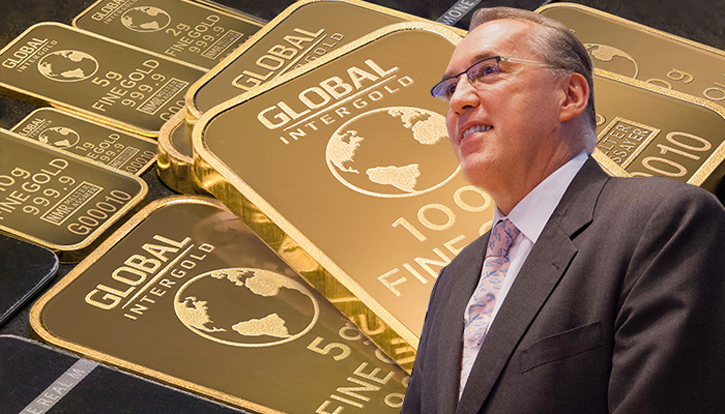
Frank Holmes, CEO and CIO of U.S. Global Investors, was interviewed by The Assay in November 2020. Topics covered include: the price of gold, silver volatility, growing global debt and more. Read an excerpt of the interview below:
The Assay: Gold has been on a massive run this year, but recently had a bit of a pullback. Is this the end of the rally? What is your take?
Frank: Life is about managing expectations. It is about realizing for investors the DNA of volatility. Each asset class has its own DNA of volatility. Interesting enough, most of the talking heads in New York, are negative on gold. They say it is more volatile than the S&P when they’re actually exactly the same. Over one day, or 10 days, or one year, they basically have the same DNA of daily volatility.
We are now in a normal correction in a secular bull market in gold and in gold stocks. Gold stocks this quarter will have record free cash flow yields. This is the first time this has happened in the 15 years that we have been tracking this group of 88 global gold producers. It was in March this year that S&P’s positive free cash flow yield went negative because of COVID-19, but the gold stocks went positive. This is very important. June had great strong growth, and this quarter is going to be fantastic.
In terms of where you see the gold price going…
Look up.
And the timeline for that?
I have looked at other periods when we have had this incredible printing of money. After the tech bubble, we suddenly saw the G20 finance ministers become consumed with synchronized trade. China came into the game and we had a big run up in gold and gold stocks through 2008/2009.
All of a sudden, these G20 Federal Reserve central bank equivalents and finance ministers became consumed with synchronized taxation and regulation, where they were spending a billion dollars a week on global anti-money laundering laws. That is pivoting now. In dealing with COVID-19, they are collectively saying, “Let’s all print money.” You are seeing currency debasement – not where one country is outdoing the other; they are basically all doing it in unison. If you look at how much money was printed by the Federal Reserve in 2008/2009 where we saw a $3 trillion expansion of balance sheet; gold went from the $700/800 range to $1900. If we look at this expansion of the balance sheet and we forecast it in a similar pattern, then gold can easily go to $4,000.
What is your take on the silver market? Silver went up in percentage terms more than gold, but then also came back down harder. What is next for silver?
It is a nice question because it is an important question. When you look at it from a quant world agnostic standpoint (from supply demand factors), what has happened is that the DNA, the beta of silver to gold, is 50% more. If gold goes up 10%, silver goes up 15%. But, there is typically a lag where gold is going up and up and up and then silver has a huge surge after, at which point it outperforms gold. Vice versa if gold corrects 10%, silver falls 15%. Anyone buying silver must recognize that DNA of volatility between the two. I like to say that silver is the warrant on gold. A warrant on any gold stock is always more volatile than the underlying gold stock.
Beyond gold, are there any other commodities you particularly like?
I think nickel and silver are interesting. Copper gold porphyry deposits – you can buy these stocks a lot cheaper than buying a gold stock on a cash flow basis. At the top of the cycle they all trade in the same cash flow multiples. If you are a value investor, I think you want to look at the copper gold assets out there. I think that they are the ones that are going to give you a longer-term picture and give you a big bang for your buck.
Want to receive the latest news from U.S. Global ETFs straight to your inbox? Sign up for monthly updates by clicking here.
U.S. Global Investors has authored and is responsible for the summary on this page. All opinions expressed and data provided are subject to change without notice. Opinions are not guaranteed and should not be considered investment advice.
Free cash flow (FCF) represents the cash a company generates after accounting for cash outflows to support operations and maintain its capital assets.
Beta is a measure of the volatility—or systematic risk—of a security or portfolio compared to the market as a whole.
